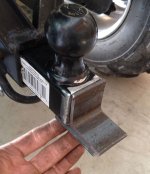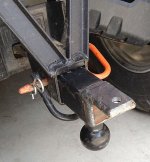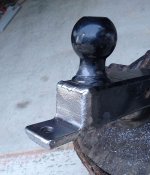aczlan
Good Morning
- Joined
- Mar 7, 2008
- Messages
- 16,985
- Tractor
- Kubota L3830GST, B7500HST, BX2660. Formerly: Case 480F LL, David Brown 880UE
Ummm you dont seem to know what you are talking about. What you measure with penetration is the shear or tensile strength of the weld holding the pieces of metal together. If you dont KNOW how well your weld penetrated, you dont know how strong it is.What is the "penetration" of a bolted joint - Zero, but it can work if designed properly, they are everywhere. Fusion is another aspect of a weld joint that has a large effect on the serviceability of a weld.
As for the "penetration" of a bolted joint, if you have 2 pieces of metal bolted together with 2 1/4-20 grade 5 bolts, it takes ~42500# of force to shear both bolts (per the specs at: https://www.boltdepot.com/fastener-information/materials-and-grades/bolt-grade-chart.aspx ).
To pull the metal apart (ie: tension loading the bolts)it would take ~46000# of force.
For more information than you would ever want to know about designing bolted joints, see: https://www.fastenal.com/content/feds/pdf/Article - Bolted Joint Design.pdf
Aaron Z



